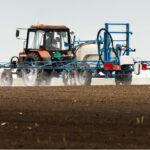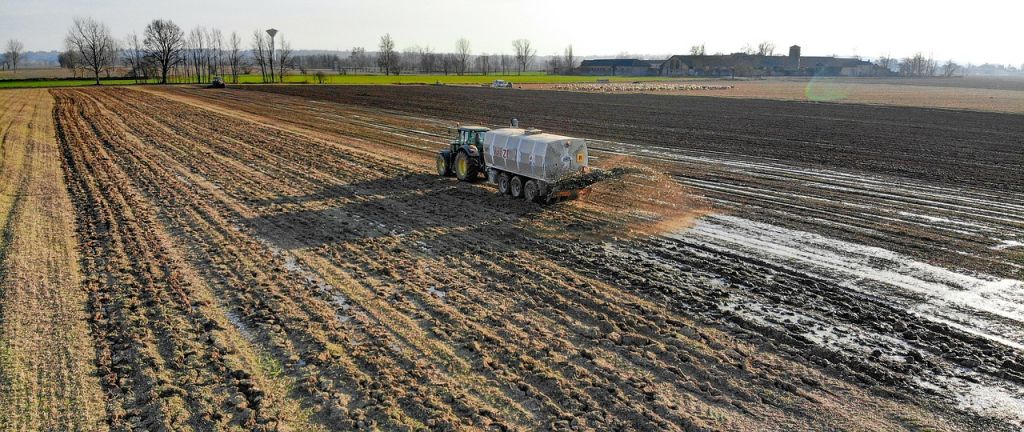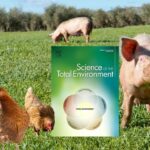
Risks of nanos in agriculture

Risks of nanos in agriculture
By the AVICENN team – Last modification December 2025
In November 2004, in Canada, the ETC Group, a group of expert activists, published Down on the farm, a very documented and volatile report dealing with the rise and impact of nanotechnologies developed for agriculture and food. Among its recommendations was a ban on the release into the environment of agricultural inputs containing nanos (whether pesticides, fertilizers or soil treatment products) whose safety has not been established. This necessitated, de facto, the creation of new regulatory provisions mandating the specific risk assessment of these new products, for which a number of patents had already begun to be filed by BASF, Bayer, Monsanto, Syngenta and others.
Twenty years on, little progress has been made in terms of transparency and vigilance…
Debates and concerns related to the encapsulation of the active ingredient
Many promises surround nanomaterials in plant protection products. Among them, “nano” clays are used to trap molecules and cause a slow diffusion of active materials. This is called the “delay effect”.
Now, if the support is nanostructured, internally or on the surface, the “captured” or “encapsulated” active material is most probably also nanostructured. If the overall amount of active product used is lower due to a larger surface to volume ratio at the nanoscale, should we be happy about the increased effectiveness of smaller quantities? Less active ingredient per unit on a treated surface can reduce the TFI indicator (treatment frequency index) but does this limit the environmental impacts1A 2019 study conducted by researchers at Oregon State University, reveals that a conventional insecticide with the active ingredient encapsulated in nano-sized plastic is more toxic than applying the same active ingredient with a larger plastic capsule or without any encapsulation. cf “Pesticide Encapsulation at the Nanoscale Drives Changes to the Hydrophobic Partitioning and Toxicity of an Active Ingredient,” Matthew Slattery, Bryan Harper, and Stacey Harper, Nanomaterials 9, no. 1 (January 2019).? Do the tools exist to help farmers limit overspreading? Will the gains sought in terms of active ingredient savings still be as interesting compared to the price of the precision tools that farmers will have to equip themselves with and the constraints induced by their use? The debate is open and the concerns are legitimate.
What level of information do farmers have and what are the impacts on their health?
In general, farmers have very little information about the uses and risks of nanomaterials and nanotechnologies2This observation comes from the exchanges between AVICENN and various stakeholders of the agricultural sector; it was also made by three students of ISARA, Beucher M, Chignier M & Hess S in a student project Maestro realized in 2016 in partnership with AVICENN.
If the manufacturers now inform distribution networks on the need to complete the R-nano declaration as required by law, they are much less forthcoming with information about “what is nano” in the pesticides and fertilizers that they offer as well as on the issues related to the presence of these nanomaterials in their products.
This is why the AVICENN association campaigns for more transparency on research, use, marketing and impacts of nanomaterials, especially in agriculture. Farmers are indeed unknowingly exposed to nanomaterials contained in the mixtures they handle and spread. Given the health risks associated with nanomaterials, there are reasons to be concerned and take the necessary preventive and precautionary measures. In 2020, researchers warned that the evaluation of the effectiveness of protective equipment does not take into account nanomaterials and low dose effects3Critical review of the role of PPE in the prevention of risks related to agricultural pesticide use, Garrigou A et al, Safety Science, 123: 104527, 2020.
Distributors are required to give farmers the declaration number (cf. Order of August 6, 2012, Art. 3, II) but it would be necessary to go further, by imposing the fact that they also provide them with information on the nature of the nanomaterials present in their products, the purpose of R-Nano, the risks associated with these substances and the appropriate protective measures. This information should also be provided by manufacturers upstream.
What impacts do nanos have on agricultural soils?
Mobile and small, nanos are a source of damage to flora and fauna
Nanomaterials, because of their small size, are highly mobile and can cross the protective barriers of plant cells and can cause significant damage to flora and fauna, including micro-organisms in some soils4See for example:
– Undesirable impacts on wheat photosynthesis: Titanium dioxide nanoparticles impaired both photochemical and non-photochemical phases of photosynthesis in wheat, Dias MC, Protoplasma, 256(1): 69-78, January 2019
– undesirable soil impacts: Dynamics, reactivity and ecotoxicity of metal oxide nanoparticles in soils: impact on the functions and diversity of microbial communities, thesis by Marie Simonin (Microbial Ecology / UMR CNRS 5557 Claude Bernard University – Lyon 1), defended in October 2015 (summary of the pre-submission).
They can also go up the food chain – researchers have demonstrated the transfer of nanomaterials from roots to leaves (of wheat or rapeseed for example) and to plant seeds (for example in soybean sprouts).
What is the impact on agricultural soils where sludge from wastewater treatment plants is spread?
There is also another way for nanomaterials to enter agricultural soils, this time unintentionally: the spreading of sewage plant sludge, which contains nanomaterials (filtered during the treatment process). However, if some contaminants are controlled, there is currently no obligation to monitor nanomaterials or their residues in soils and crops…

Studies show that nanosilver in sewage sludge has toxic effects on earthworms or soil microorganisms that are essential to the natural nitrogen cycle. In France, French researchers from ISTERRE have observed changes in the enzymatic activity of soils cultivated after spreading sludge from wastewater treatment plants contaminated, even in small doses, by silver nanoparticles.
At the end of 2015, the OECD published a report that considered the agricultural spreading of wastewater treatment sludge “alarming”, in view of the risks associated with the presence of nanomaterials in this sludge.
How many years will it take before we provide a response in line with what is at stake? Should we let the development of mass uses take place or should we learn from past similar experiences (nitrates, etc.)?
Many questions are still unanswered
Many questions remain unanswered to this day:
- What is the volume of nanomaterials used in agriculture?
- What is “nano” in pesticides and fertilizers? Is it the active ingredient? Is it an ingredient in the formulation?
- Why do crop protection product manufacturers use them? What are the expected benefits?
- What is the influence of the size of the active particles on the properties of the formulations? It is advertised as more precise and better targeted and therefore more effective, but what happens after the substance is delivered?
- What risks have been identified? What precautionary measures are taken? With what degree of reliability?
- For whom? how? when? where?
- Are there anticipated thresholds of use as for other products (cf. e.g. nitrate directive, limitation of herbicide use)?
A 2018 study published in Nature Nanotechnology confirms that:
“Currently, there are no solid scientific studies that have analyzed the efficacy of nanoparticle-containing formulations and their impact on the environment under field conditions. This is a crucial gap in our knowledge and makes a thorough and comprehensive assessment impossible at present. Further research is needed to address this issue5Cf. Nanoparticles in plant protection products and fertilizers: a study presents the state of knowledge, Agroscope, 7 May 2018 (A critical evaluation of nanopesticides and nanofertilizers against their conventional analogues, Nature Nanotechnology, Kah M et al., 2018)“.
That’s why in July 2022, AVICENN sent a study proposal ‘Information on nano-enabled pesticides and fertilizers‘, in partnership with CIEL, ClientEarth, EEB and HEAL, to the European Observatory for Nanomaterials (EUON) in response to a public call of this organization (part of the Euoperan Chemicals Agency, ECHA).
A few days after that, in August 2022, Indian researchers also warned in a review of the scientific literature:
“Nanotechnologies often involve the use of metal or metal oxide nanoparticles, which can enter the human body and accumulate there through biomagnification. Although their effects on human health are not known, nanoparticles can reach toxic concentrations in soil and leach into rivers and other water bodies, making their disposal a huge economic burden”6Cf. A comprehensive overview of nanotechnology in sustainable agriculture Arora S et al, Journal of Biotechnology, 355: 21-41, August 2022.
→ Since then, other publications have also been published, calling again for greater vigilance with regard to nanos in crop protection products.
Following the selection of AVICENN’s 2022 proposal, Innovamol achieved a Collection and review of information on nanomaterial-based and nanoenabled plant protection products, biocidal products and fertilising products, published by the European Observatory for nanomaterials (EUON) in November 2024. The report highlights the lack of available date and calls for better regulation of nanos in phytopharmaceuticals.
In 2025, two review of scientific litterature made by French researchers have been published in Science of The Total Environment, with similar conclusions:
- Efficiency and safety of nanopesticides, it takes two to tango. An overview of the lack of data on possible effects on human health, Forest V, Pourchez J, Flahaut E, Science of The Total Environment, 973, April 2025: “Nanopesticides appear as promising tools to limit the adverse effects of conventional pesticides. However, before their widespread application, their safety, in particular to human health, must be ensured. To date, this aspect has been overlooked as studies primarily focus on the synthesis and target efficiency of the product. Comprehensive investigations of the environmental fate, toxicity, and long-term consequences associated with their use are necessary”.
- Copper nanoparticles in agriculture: from expected benefits of reduced copper use to toxicity on gut health, Casale E et al., Science of the Total Environment, 1004, 15 November 2025: after compiling and analyzing more than a hundred academic publications, they call for the utmost caution, in view of the risks that copper nanoparticles pose to the liver, the gut microbiota and, more broadly, the entire digestive system7Cf. Copper nanoparticles in agriculture: a precautionary approach is needed, AVICENN @VeilleNanos, December 2025.
→ The massive development of nanomaterials, without further measures to better understand and control the currently uncontrolled release of nanomaterials, looks like a time bomb. This is why voices have been raised over the past fifteen years to demand better anticipation and regulation of nanomaterial use. In order to avoid repeating the mistakes of DDT, atrazine or “neonicotinoid” insecticides, it is important to better understand and control the products used by farmers in order to better predict and minimize the risks. An isolated solution can become a problem if all farmers apply the same products at the same time in the same area. Agriculture has already been confronted with such dilemmas and collective management practices exist, either forced or voluntary depending on the place and the subject.
Any questions or comments? This information sheet compiled by AVICENN is intended to be completed and updated. Please feel free to contribute.
Other news on the topic
Our information sheets to go further
Upcoming Nano Agenda
- Spectacle Art & Science – When science changes as it passes from mouth to mouth
- A unique participatory experience centered on the human factory of knowledge, where two fascinating worlds meet: nanomedicine, with its nanoparticles and cellular nanovectors, and quantum physics, with its superimposed states and complex systems.
- Organizers: Centre National de Compétences en Nanosciences (C’Nano), in collaboration with the Commissariat à l’Énergie Atomique (CEA), the Institut Polytechnique de Paris (IPP) and the Centre National de la Recherche Scientifique (CNRS).
- Speakers: Florence Gazeau, academician, physicist, research director at CNRS, and Charles Antoine, PhD in physics, lecturer at Sorbonne University, and Albert Moukheiber, PhD in neuroscience.
- Location: Théâtre de la Ville
- Website: https: //www.theatredelaville-paris.com/…/rencontres/nano-rumeurs…
- 8th Congress of Occupational Medicine and Health (CNMST 2026)
- Theme 5: Emerging pathologies and risks, Mr Henri Bastos (ANSES), Pr Lynda Bensefa-Colas (AP-HP), Dr Catherine Nisse (CHU Lille)
- Website: www.medecine-sante-travail.com
- 20th meeting of the “nano and health” dialogue committee
- Organizer: ANSES
This sheet was originally posted in July 2017.
Notes and references
- 1A 2019 study conducted by researchers at Oregon State University, reveals that a conventional insecticide with the active ingredient encapsulated in nano-sized plastic is more toxic than applying the same active ingredient with a larger plastic capsule or without any encapsulation. cf “Pesticide Encapsulation at the Nanoscale Drives Changes to the Hydrophobic Partitioning and Toxicity of an Active Ingredient,” Matthew Slattery, Bryan Harper, and Stacey Harper, Nanomaterials 9, no. 1 (January 2019).
- 2This observation comes from the exchanges between AVICENN and various stakeholders of the agricultural sector; it was also made by three students of ISARA, Beucher M, Chignier M & Hess S in a student project Maestro realized in 2016 in partnership with AVICENN
- 3Critical review of the role of PPE in the prevention of risks related to agricultural pesticide use, Garrigou A et al, Safety Science, 123: 104527, 2020
- 4See for example:
– Undesirable impacts on wheat photosynthesis: Titanium dioxide nanoparticles impaired both photochemical and non-photochemical phases of photosynthesis in wheat, Dias MC, Protoplasma, 256(1): 69-78, January 2019
– undesirable soil impacts: Dynamics, reactivity and ecotoxicity of metal oxide nanoparticles in soils: impact on the functions and diversity of microbial communities, thesis by Marie Simonin (Microbial Ecology / UMR CNRS 5557 Claude Bernard University – Lyon 1), defended in October 2015 (summary of the pre-submission) - 5Cf. Nanoparticles in plant protection products and fertilizers: a study presents the state of knowledge, Agroscope, 7 May 2018 (A critical evaluation of nanopesticides and nanofertilizers against their conventional analogues, Nature Nanotechnology, Kah M et al., 2018)
- 6Cf. A comprehensive overview of nanotechnology in sustainable agriculture Arora S et al, Journal of Biotechnology, 355: 21-41, August 2022
- 7Cf. Copper nanoparticles in agriculture: a precautionary approach is needed, AVICENN @VeilleNanos, December 2025



